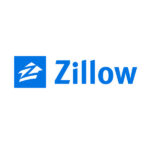
It’s no secret the insurance industry needs a massive overhaul. Stifled growth in premiums in traditional markets/products, increased operating expenses and rising cost of claims due to catastrophic events and aviation disasters have crippled the industry.
The insurance industry is not considered to be the most innovative and Blockchain seems to be a bridge too far to cross, but we challenged and changed that perception earlier.
In the past, technology advancements have come to the insurance industry in the form of stand alone products and patches. But Blockchain brings the promise of something different, a new synergy between existing technologies. Blockchain creates a synergy between other existing technologies like Telematics, Artificial Intelligence, and Robotics. When leveraged correctly, Blockchain can create new products and open up previously uninsurable markets to help insurers grow their topline.
This article will explore how Blockchain can help insurers innovate new products as well as penetrate additional markets through exploring use cases that can help achieve these objectives.
First, let’s begin with Blockchain-enabled market expansion techniques.
Penetrating additional markets : Why is it important?
In most major markets insurance premium growth has remained flat. While an argument can be put forth doubting the profitability of markets and segments outside the traditional, two findings put this case to rest: the small commercial insurance growth story and the work of renowned management guru CK Prahalad.
Moving on to Use Cases…
Insurance Premium Financing
The growing insurance protection gap is a global phenomenon and, I think, will become a crisis as the frequency of natural disasters increases. Besides stifling insurance growth, the loss to property and human life halters economic growth and a nation’s progress.
Traditional insurance business models no longer apply and apart from government intervention, it is difficult for insurers to offer people payment options other than upfront payments given the scale of the unbanked population in many countries.
Fear not, Blockchain can help.
Mobile wallets are a booming market in developing economies with more people having a mobile wallet than a bank account. M-Pesa alone processes over 1.7-billion transactions a year, accounting for more than 50% of Kenya’s GDP value (Forbes). Taking advantage of existing mobile wallets, a blockchain solution can seamlessly link a customer, bank and insurer on the same network to allow interactions to place a policy seamlessly on the ledger. All while enabling monthly premium payments through auto-debit from the customer’s mobile wallet, with the bank holding the insurance policy as collateral. If a payment is delayed due to a lack of funds, the wallet software will instantaneous cancel the policy. This sends out a notification to all parties and a synchronous update to the ledger. In the event of a claim before the policy has been paid out in full, smart contracts can deduct the amount due (premium balance including interest) from the claim amount. Then, instantly deposit the money directly into the customer’s mobile wallet, which is especially useful in single occurrence claims.
This is no longer a theoretical concept and is in practice today with startups such as Lend in a Box leading the way.
Weather-indexed insurance
Food producers globally face a fiercer battle with the weather than ever – be it subsistence farmers or multinational enterprises. The battle with weather has always been one-sided with better farming techniques being the only defense.
While traditional weather risk management tools like futures contracts and reinsurance have long been in use, there is a demand for an alternative to traditional crop insurance.
Enter weather index insurance.
Index insurance pays based on an index such as rainfall data. Pay-outs are triggered by specific components and movements of the chosen index.
The success of this index insurance contracts relies on:
- Trusting the weather data
- Seamless claim triage and payouts
A possible solution to these requirements is smart contracts. Smart contracts are code based, self-executing contracts that live on a blockchain. With their ability to instantly make decisions based on a fluctuating data source like weather from government agencies, smart contracts can enable faster settlement to an industry that never stops. In the event of a catastrophe, a smart contract can be automatically triggered from an oracle, calculate the amount due based on preset inputs, time stamped the data and send payment instantly. Organizations such as the Accord Project are standardizing the development and execution of smart contracts to ensure legal enforceability.
Promising start-ups like Raptor 300 are actively involved in this space. Combining drone technology with the power of Blockchain to not only improve crop yield but also provide weather-indexed based crop insurance in developing countries to uninsured farmers. Thereby, helping insurers increase their penetration base in several ways.
These are just a few examples of how blockchain can help insurers take their products to a broader market beyond existing distribution channels, whether digital or traditional. But what about launching new products altogether?
Insurance product innovation
Product innovation in insurance isn’t new. From recognizing the need for cyber risk insurance around the time of Y2K to identifying and plugging gaps in Uber and Lyft coverage, insurers have continuously introduced new products to protect society.
However, the existing digital stack has its limitations. For instance, dynamic pricing of insurance policies is limited to availability of real-time, trusted data. Instead of being pure pay as you go, policies in areas such as automotive are limited to variants like premiums based on miles driven.
Where can blockchain help?
Dynamic Pricing
Dynamic pricing is an emerging blockchain-enabled innovation that benefits both the insurer and the customer, with broad-ranging potential across health insurance, car insurance, property insurance and beyond.
Utilizing advancements in AI and telematics, the shipping insurance business is now enabled to access detailed, real-time information about a ship’s location, age and condition. This means, if a ship enters dangerous waters its location data would automatically be updated and recorded on the blockchain. This allows the insurer to make necessary risk and pricing adjustments to the ship’s profile and policy. The same applies in the converse scenario , enabling real-time policy adjustments saving the shipping company from unfairly high rate and insurers from unadjusted risk.
Vibrant marine insurance blockchain consortia like Insurwave are already building solutions and delivering on the promise of blockchain to their ecosystem participants.
Pay-as-you-go insurance
As mentioned earlier, existing pay-as-you-go insurance policies don’t go the full distance. Similar to the dynamic pricing scenario explained for shipping above, drivers should equally be paying more for driving through a snowstorm than on a perfect sunny day, irrespective of the miles driven. Pay-as-you-go automotive products offered today are two-dimensional, using data only from what the car produces.
Telematics devices can now utilize machine learning algorithms underpinned by Blockchain technology. Enabling insurers to incorporate driving behavior data such as speed and hard braking updated in real-time on the Blockchain.
Additionally, telematics technologies can open up opportunities in pay-as-you-drive policies. By measuring the time a driver spends on the road daily and recording this in real time, both parties can adjust their risk accordingly.
From startups like Cendol to multi-billion dollar organizations like Infosys, companies are actively building solutions to tackle this problem. Resulting in not only a reduction of costs but opportunities of an entirely new policy model.
Conclusion
Blockchain is a marathon, not a sprint. Just like how an ironman triathlete prepares and excels in all disciplines, a holistic and well-thought out Blockchain strategy can help insurers reduce costs, increase revenue and ultimately introduce new business models. Start today with an eye on the future!
About Author
 Ronnie Kher leads global sales and business development activities at R3, an enterprise blockchain firm. His background is in consulting for and to the insurance industry and when not working with partners and customers to expand the R3 insurance ecosystem, he is reading up on the impact of technology on the ever-dynamic world of insurance. If you wish to discuss anything blockchain and insurance, shout out at ronnie.kher@r3.com.
Ronnie Kher leads global sales and business development activities at R3, an enterprise blockchain firm. His background is in consulting for and to the insurance industry and when not working with partners and customers to expand the R3 insurance ecosystem, he is reading up on the impact of technology on the ever-dynamic world of insurance. If you wish to discuss anything blockchain and insurance, shout out at ronnie.kher@r3.com.











